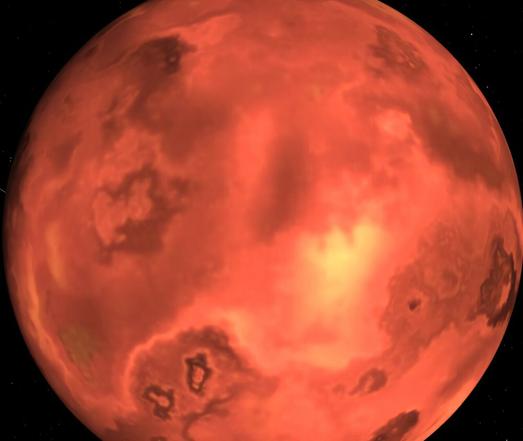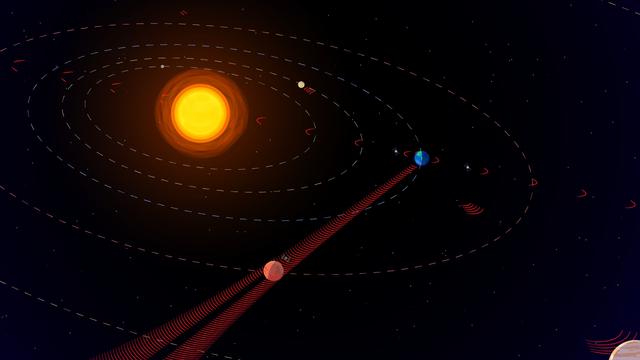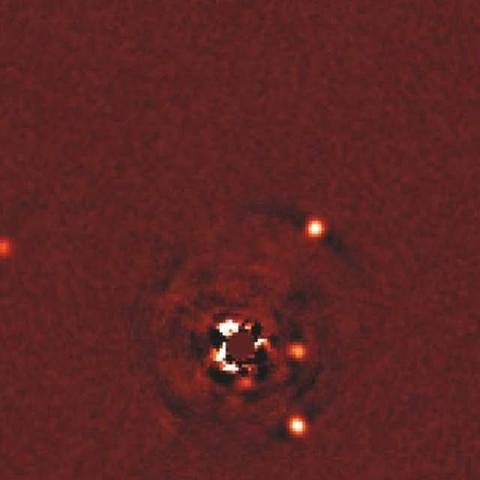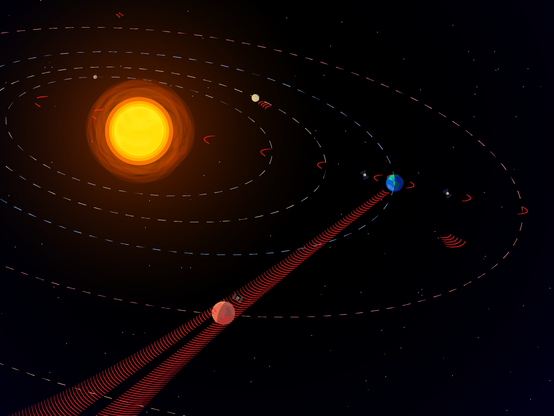
Another Earth-like exoplanet crossed off the list: JWST shows that GJ 3929b has no atmosphere
As missions like Kepler and TESS discovered more rocky exoplanets in recent years, scientists looked forward to the launch of the JWST. The powerful space telescope has the ability to gather infrared spectra of exoplanet atmospheres, a key need in understanding the planets being discovered. It was hoped that these atmospheric characterizations would advance our understanding of habitability.

Analysis suggests the most likely places to detect signals from an extraterrestrial intelligence
If an extraterrestrial intelligence were looking for signs of human communications, when and where should they look? In a new study, researchers at Penn State and NASA's Jet Propulsion Laboratory in Southern California analyzed when and where human deep space transmissions would be most detectable by an observer outside our solar system and suggest that the patterns they see could be used to guide our own search for extraterrestrial intelligence (SETI).
@spaceflight high signal, almost no noise channel.
https://youtu.be/iLbbpRYRW5Y?si=R8fUNBVPuRSLJbSr
#CoolWoklds #ExoPlanet #ExoMoon #LifeInTheUniverse #IntelligentLife

The Odds of Life and Intelligence

Tidal Forces and Orbital Evolution of Habitable Zone Planets
How do tidal forces determine a planet’s orbital evolution, specifically planets in the habitable zone? This is what a recently submitted study hopes to address as an international team of researchers investigated how tidal forces far more powerful than experienced on Earth could influence orbital evolution of habitable zone planets with highly eccentric orbits around low-mass stars. This study has the potential to help researchers better understand the formation and evolution of exoplanets, specifically regarding where we could find life beyond Earth.
Our recent #SETILive wasn't the first time we talked about an exoplanet in the habitable zone around Alpha Centauri. Four years ago, Franck chatted with Dr. Kevin Wagner about his newly published paper in Nature Communications.
Watch more: https://www.youtube.com/watch?v=6wkpFhjdzWo

A Possible Planet in the Habitable zone of Alpha Centauri?
Sort of Photography.
Planets orbiting a distant star.
Big lens!
https://www.instagram.com/p/DND5gNiBlsg/?utm_source=ig_web_copy_link

Cosmo Sight - Astronomy & science on Instagram: "See those four tiny dots of light? They’re not just stars. They’re actual exoplanets, orbiting a distant star 130 light-years away from Earth. What you’re looking at is a real 12-year timelapse of an alien solar system: HR 8799. Captured by the Keck Observatory in Hawaii, this was the first planetary system ever confirmed through direct imaging. You’re literally watching planets move in real-time around another sun. Credit: Jason Wang, William Thompson, Christian Marois, Quinn Konopacky #nasa #astrophysics"
22K likes, 674 comments - cosmosight on August 7, 2025: "See those four tiny dots of light? They’re not just stars. They’re actual exoplanets, orbiting a distant star 130 light-years away from Earth. What you’re looking at is a real 12-year timelapse of an alien solar system: HR 8799. Captured by the Keck Observatory in Hawaii, this was the first planetary system ever confirmed through direct imaging. You’re literally watching planets move in real-time around another sun. Credit: Jason Wang, William Thompson, Christian Marois, Quinn Konopacky #nasa #astrophysics".
#scifi #exoplanet #macro #nature #flower
Built on Exoplanet 12553, this interplanetary ship won mutiple design awards. It was built as a short haul transport between planets with the streamlining to travel from the planetary surface to surface. It saved time and money by elimating the need for seperate launch and orbital ships. Now forty years old, these unsung heros are loved by spaceship nerds for their simple, elegant and purposeful designs.




